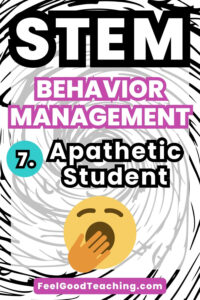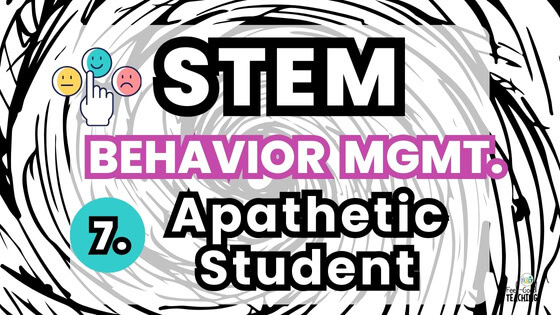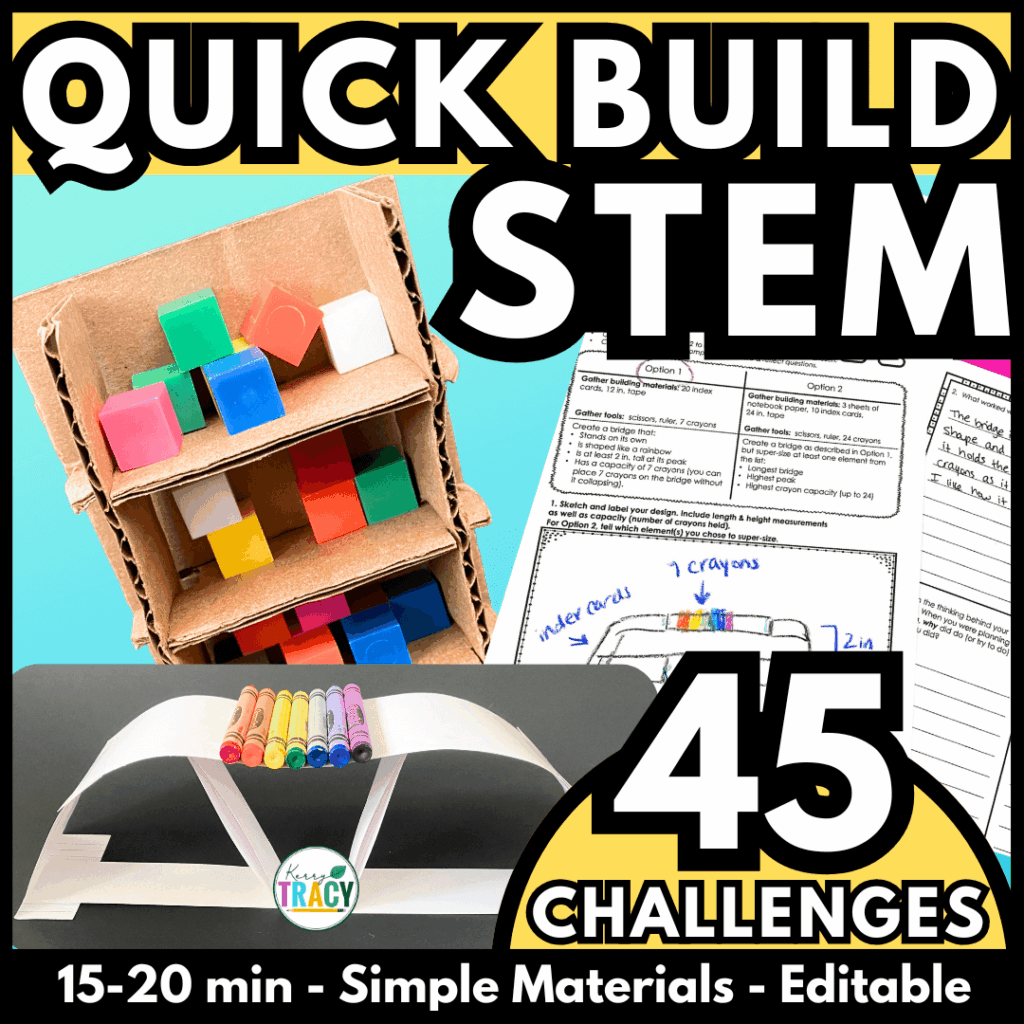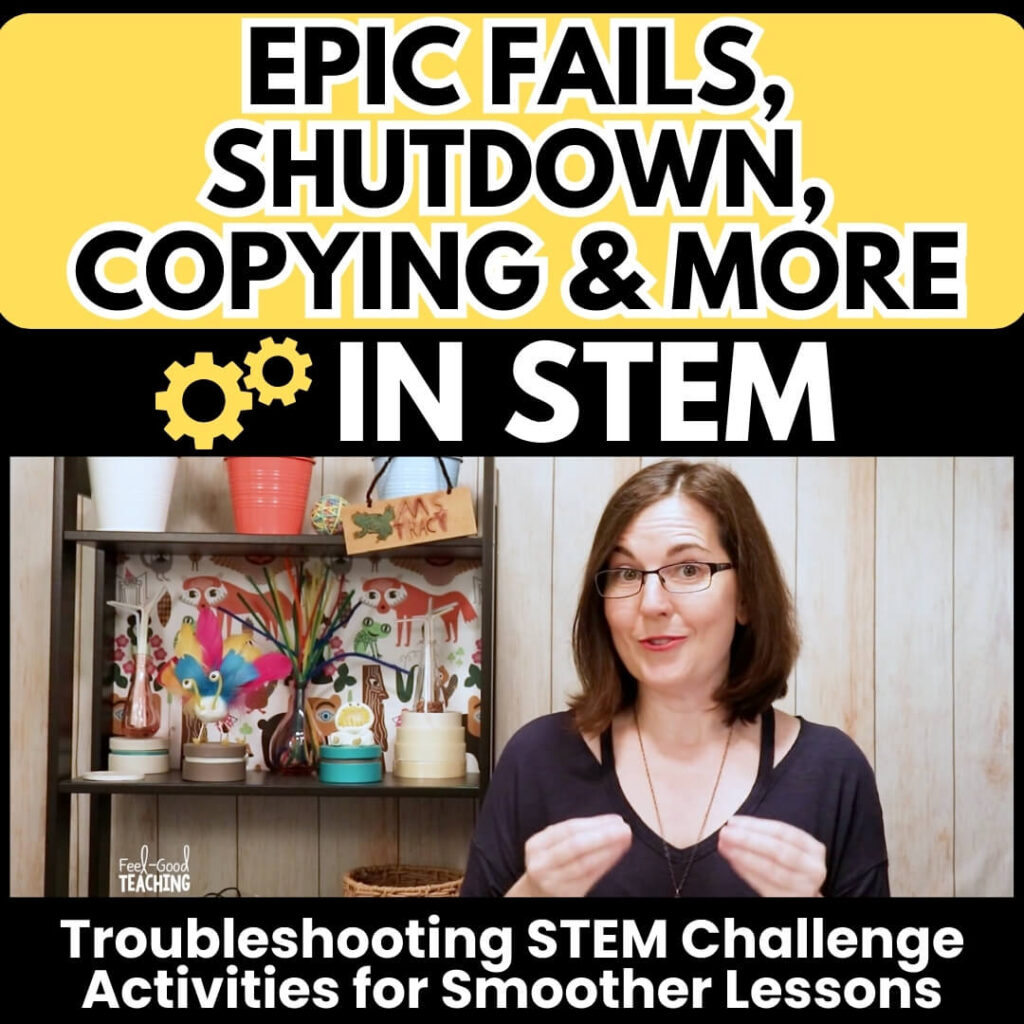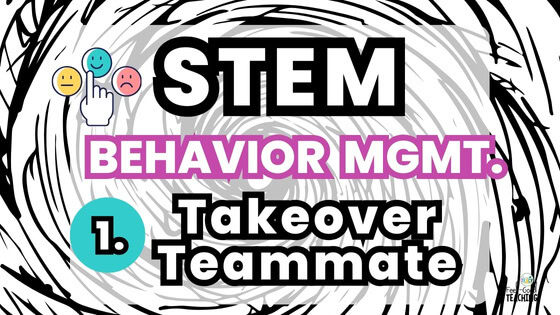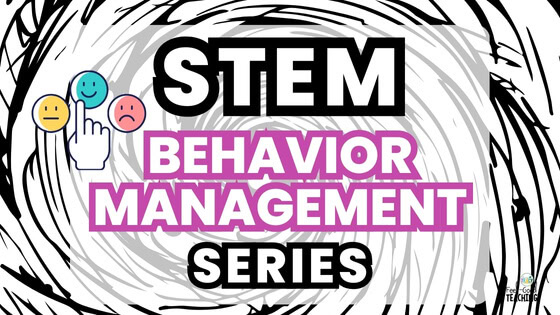Welcome to the bonus post in our STEM Classroom Management Blog Series! If you’ve been following along, you’ve seen how to navigate tricky team dynamics, encourage participation, and handle disruptive behaviors:
Today’s focus? The student who just doesn’t care.
You know this kid: arms crossed, eyes glazed over, doing the absolute bare minimum to get by. They don’t argue, they don’t misbehave, and they don’t disrupt anyone — but they also don’t seem to care.
Meet the Apathetic Student
This student might:
- Sigh and say “This is boring”
- Do the bare minimum—or nothing at all
- Refuse to join a group or even pick up materials
- Say “I don’t know” or “I don’t care” when asked for input
It’s frustrating, especially when STEM is supposed to be fun, hands-on, and engaging. But here’s the truth: even the most creative challenge can fall flat if a student doesn’t see why it matters — or believe they have anything meaningful to offer.
In STEM challenges, disengagement like this can be tricky. These students might quietly withdraw, offer little input, or avoid contributing altogether. It’s not that they can’t participate. It’s that they don’t feel invested enough to try.
The good news? You can often flip that switch with the right combination of choice, relevance, and ownership.
Why Students Appear Apathetic During STEM Challenges
When kids disengage, it usually isn’t laziness. Often, it’s a signal.
Common root causes:
- Lack of relevance: If students don’t see a personal connection, their motivation drops.
- Feeling powerless: When there isn’t enough choice, STEM becomes something done to them, not by them.
- Fear of failure: Some students check out because they’d rather avoid trying than risk “doing it wrong.”
- Low confidence in STEM skills: If they’ve struggled in the past, they may assume it’s “not their thing.”
- Overload or stress: Sometimes they’re preoccupied by things outside of school (e.g. trauma, hunger, anxiety). Remember, everyone is fighting unknown battles, so try not to take it personally.
Understanding which factor is driving disengagement is key to rebuilding buy-in.
Strategies for Supporting Apathetic Students
Here’s how to support students before, during, and after a challenge when disagreements threaten to derail progress.
🌍 Before the Challenge: Build Autonomy & Spark Curiosity
1️⃣ Use STEM choice menus
Give students a menu of two or three possible builds or paths to explore. Ownership starts with having a say. See activities with built-in student choice here.
2️⃣ Incorporate student-designed challenges
Invite students to create their own STEM challenges for peers to attempt. You might suggest they get ideas from problems related to stories, the playground, classroom storage, etc. Even just brainstorming constraints or themes can deepen investment. To increase buy-in, have the class do student-made challenges whole-class, or as an early finisher option.
3️⃣ Lead with curiosity hooks
Kick off with a surprising fact, short video, or “what if” question to capture attention. Relevance sparks engagement.
4️⃣ Highlight real-world connections
Tie STEM challenges to students’ interests or issues they care about: sports, gaming, environmental action, current events, etc.
5️⃣ Normalize failure as part of the process
Emphasize iteration and celebrate “favorite mistakes.” The more you lower the fear of being wrong, the safer students feel to participate. Our culture has a LOT issues with toxic achievement, so this could take some time to help students feel safe. A few supports for you:
- Use STEM activity rubrics that value process over product and reward risk-taking, even when it fails.
- Create standard operating procedures to help students regulate emotions when they want to shut down. (See mini PD supports)
- If you haven’t yet read Never Enough: When Achievement Culture Becomes Toxic and What We Can Do About It, I highly recommend it for all parents & teachers (affiliate link). It’s rally eye-opening not only for the kids we support, but also for ourselves. We grew up steeped in this culture, too!
⏱️ During the Challenge: Invite Leadership & Ownership
📌 Create micro-decision moments: Even in structured tasks, offer choices: materials, design strategies, testing order, or how to document findings.
📌 Offer leadership opportunities: Encourage disengaged students to lead part of the process (e.g., tracking materials, capturing data, coaching peers, or facilitating brainstorms).
📌 Check in privately: Ask open-ended questions like:
“What’s your team’s plan?”
“Which part of this do you want to take on?”
Giving one-on-one space lets reluctant students re-enter without spotlight pressure.
📌 Build “buy-in moments”
Pause mid-challenge to ask: “How could we make this more interesting?” Let their ideas shape the process.
🔄 After the Challenge: Reflect & Empower
⭐️ Prompt reflection: Ask:
- “What part of today’s challenge did you enjoy most?”
- “What’s one thing you’d change next time?”
⭐️ Invite students to pitch ideas: Give them a voice in shaping upcoming challenges or criteria. Their input boosts ownership and engagement.
⭐️ Celebrate effort and creativity
Highlight risk-taking, collaboration, and unique solutions — not just “winning” designs.
⭐️ Offer leadership roles for next time
Build anticipation by letting disengaged students take on responsibility for the next activity.
⭐️ Look for broader patterns
If a student is checked out in all subjects, follow up privately or loop in support staff. If it’s only STEM, consider tweaking your approach, choice options, or challenge framing.
🧠 Don’t Give Up
Apathy is rarely about laziness. More often, it’s about connection, relevance, and autonomy. By offering choice, highlighting real-world meaning, and creating opportunities for students to lead, you can transform passive participants into curious, engaged creators.
A disengaged student doesn’t mean a failed lesson. It means there’s room to build a bridge.
Connection, curiosity, and confidence often come later—after they’ve had the chance to feel safe, heard, and successful in a small way.
Keep going. Small wins add up.
💡 Want a Free STEM Classroom Management Handbook?
I’m putting together a printable copy of these strategies as well as navigating other tricky STEM behaviors perfect for keeping in your lesson planner or sharing at your next PLC or team meeting. It will be sent to every subscriber on my email list when the series is complete. Sign up below to get on the list.
Looking for STEM Activities with Student Choice Built In?
STEM Rubrics and Productive Failure Mini PD:
✨ Next in the Series…
Next up: “The Perfectionist”
Explore all posts in the STEM Classroom Management Series here.
Pin it. Share it. Save it. Let’s build better teams, one STEM challenge at a time. 🚀
Every challenge is a chance to teach collaboration. Let’s help students disagree productively.
